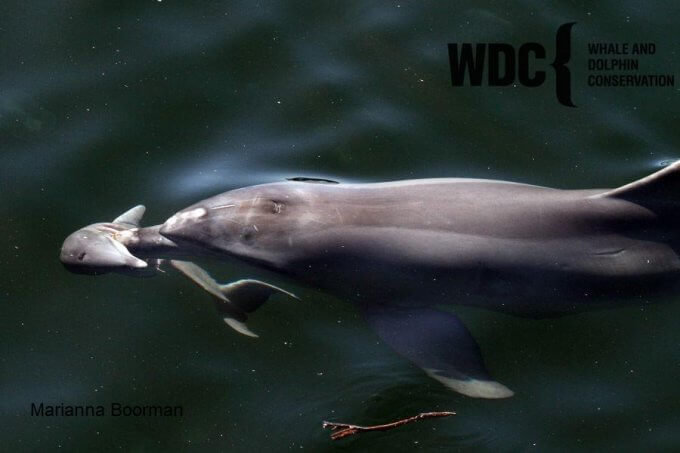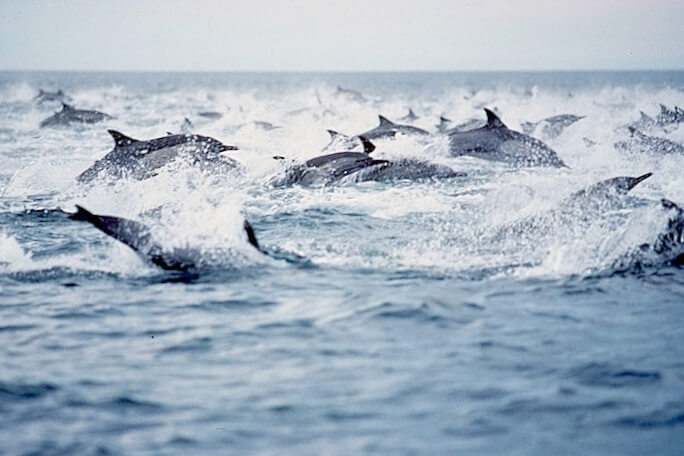By Maureen Jouglain
An understanding of death and reaction to the loss of a loved one are generally considered to be human attributes. It would seem, however, that the mechanisms inherent in mourning behaviour are deeply rooted in the evolutionary history of mammals. Several observations suggest that the reactions of cetaceans to the death of a congener recall those observed in humans and other land mammals.
Surprising behaviours
In a chapter entitled “Cetacean Behavior Toward the Dead and Dying” recently published in the Encyclopedia of Animal Cognition and Behavior, researchers have gathered hundreds of cetacean observations made over several decades in every ocean of the world and in aquariums. The text reveals some quite surprising behaviours, such as one or more individuals remaining close to a dead individual, maintaining physical contact with the carcass, lifting it to the surface or maintaining it there. In the Red Sea, for example, scientists have observed an Indo-Pacific bottlenose dolphin in contact with the decomposing body of a young dolphin. After researchers secured the dead animal in order to transport it back to land, the adult continued to swim at its side, occasionally touching it until the water became too shallow. The adult was observed swimming close to the coast for several days after the carcass had been removed.
Surprising observations of this type have also been made in St. Lawrence belugas. The first one dates back to July 1998, recalls Robert Michaud of the GREMM. The vocalizations of a female carrying the corpse of a newborn on her back was able to be recorded. Several years later, these recordings were analyzed by researcher Valeria Vergara of the Vancouver Aquarium. She found a long series of “contact calls,” which are mainly used by females and their young to stay in touch.
In some cases, compensatory behaviour is also observed. Carcasses of other species or even objects become substitutes for a deceased family member, helping alleviate the pain of separation and addressing the need to maintain a bond with it. A noteworthy example is a female captive beluga that, after her dead calf was removed from her pelvis, initially transported her own placenta for several days and then a buoy for several months.
This type of comportment is known as epimeletic behaviour. This term refers to any altruistic behaviour that involves a healthy individual caring for a dead or troubled congener. Sometimes this is done to the detriment of their own survival. For example, surviving adults can stop feeding for extended periods. They will also tend to stray from the group and thus be more exposed to the risk of predation.
Mourning: universal behaviour in mammals?
In land mammals, the spectrum of interaction between a mother and her deceased offspring is also very broad, reports Giovanni Bearzi, President and Science Director of Dolphin Biology and Conservation and co-author of the chapter. Giraffes have been seen inspecting and sniffing carcasses. African elephants are known to remain near a dead or dying calf in a “distress”-like state. Chimpanzees have been observed on a number of occasions carrying and grooming a dead newborn, and wolves have even been seen burying a deceased pup. What do all these species have in common? They all form strong social bonds between individuals.
In most of these species, cooperation between individuals is necessary to ensure their survival, whether for feeding or for raising young (allomaternal care). Acquiring a certain form of empathy thus gives them a considerable evolutionary advantage. Empathy and gregariousness imply attachment. However, mourning (or post-separation suffering) appears to be the cost of such attachment. The stronger the bond between two individuals, the greater its rupture will affect the surviving individual. This is why this behaviour is most observed between a mother and her offspring.
According to Giovanni Bearzi, we have more in common with animals than we believe. With the advances being made in the field of cognitive ethology and comparative psychology, the boundaries between humans and other mammals with developed cognitive abilities are gradually blurring: “In my view, many mammals, including cetaceans, care for others. There is nothing anthropomorphic about it. Rather, the error is to assume that everything we feel is only human and that animals are merely instinctive machines.”
Why not in baleen whales?
These observations have been made mainly in Odontocetes, more commonly called toothed whales. Of these, the two species with the greatest number of documented cases of mourning behaviour are the bottlenose dolphin and the pilot whale, though a number of observations of this behaviour have been made in belugas and sperm whales, amongst others. In baleen whales, however, there are few documented cases. Several hypotheses have been put forward. Perhaps mourning has not developed in these species, which generally live in much smaller groups and exhibit altruistic behaviours such as parental care more rarely. Lacking teeth, they may also find it harder to transport carcasses for long periods. Conversely, some researchers believe that these behaviours probably exist, but that they are simply under-documented due to the fact that baleen whales live in the high seas and are much less numerous in terms of species and abundance.
Sources
- Bearzi G., Eddy L., Piwetz S., Reggente M.A.L., Cozzi B. 2017. Cetacean behavior toward the dead and dying. Encyclopedia of Animal Cognition and Behavior (J. Vonk and T.K.Shackelford, eds.)
- Reggente, M. A., Alves, F., Nicolau, C., Freitas, L., Cagnazzi, D., Baird, R. W., & Galli, P. (2016). Nurturant behavior toward dead conspecifics in free-ranging mammals: new records for odontocetes and a general review. Journal of Mammalogy, 97(5), 1428-1434.








